The calendar says Spring should be here already…but today is another in a recent string of wet, chilly days and I’m tired of it! I really meant to write a new post about one of my favorite towns in the Corrèze (and I still will!), but today I’m feeling like recalling something more appropriate to the season – the memorable Spring day when I visited the Gardens of Eyrignac…
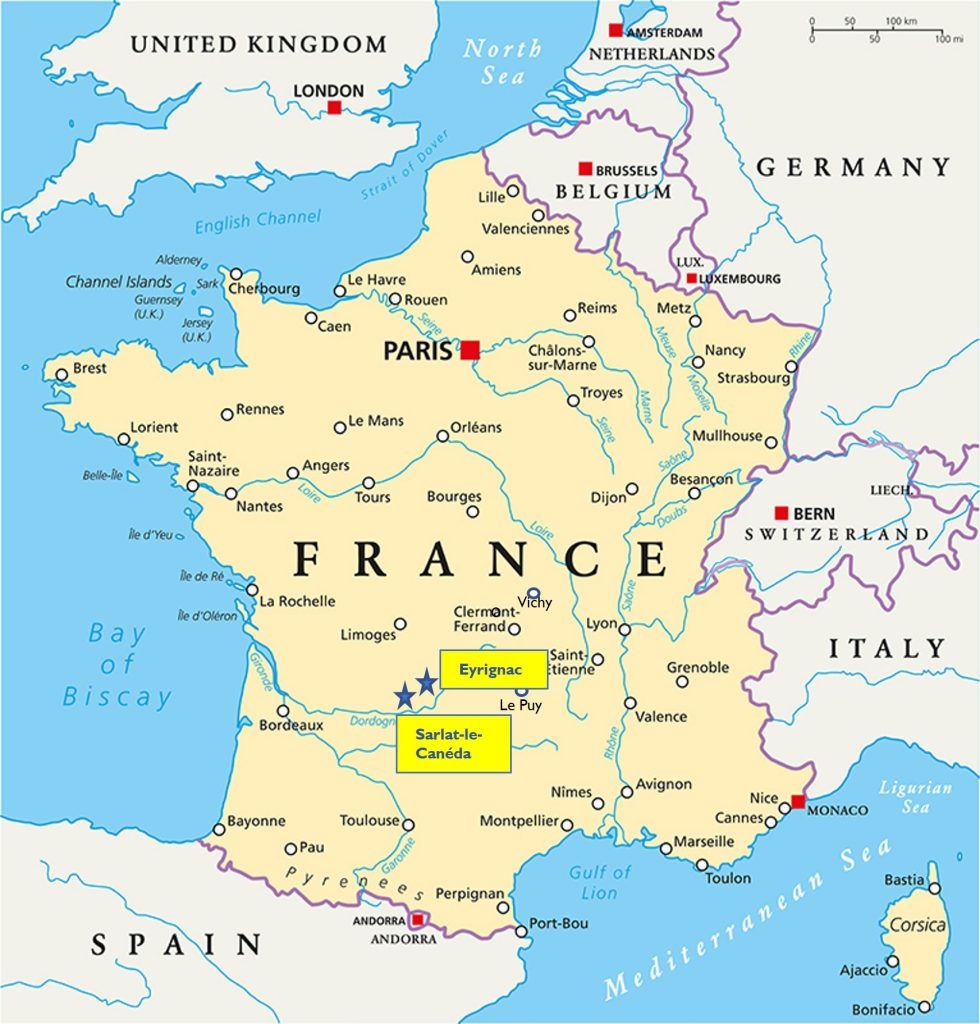
We’re in the Périgord Noir region of the Dordogne – only 20 minutes northeast of the great medieval market town of Sarlat-la-Canéda. Eyrignac is just one place to visit in this concentrated area where you’ll find some of the best places for tourism anywhere in western Europe. I’ve written elsewhere about several of them: the powerful fortresses at Beynac and Castelnaud, the “most beautiful villages” of La Roque Gageac and Limeuil, and of course (if you’re really in the mood to visit some incredible gardens) the artistic topiaries at Marqueyssac.
(Marqueyssac is only 30 minutes away from here if you want to make a whole day of garden tours; the other sites are almost all 30 minutes to an hour away from Eyrignac. As I said - "concentrated".)

First impressions at Eyrignac
Eyrignac is a different kind of escape, though. That was obvious to me as soon as I had passed through the entry and walked down to the first level of the gardens, really just a huge open grass lawn with a couple of contemporary sculptures. The first thing I noticed was a man on his hands and knees, meticulously clipping the borders of the grass with scissors, followed by a crew of students pulling out any loose individual blades the scissors missed and tossing the clippings into buckets!
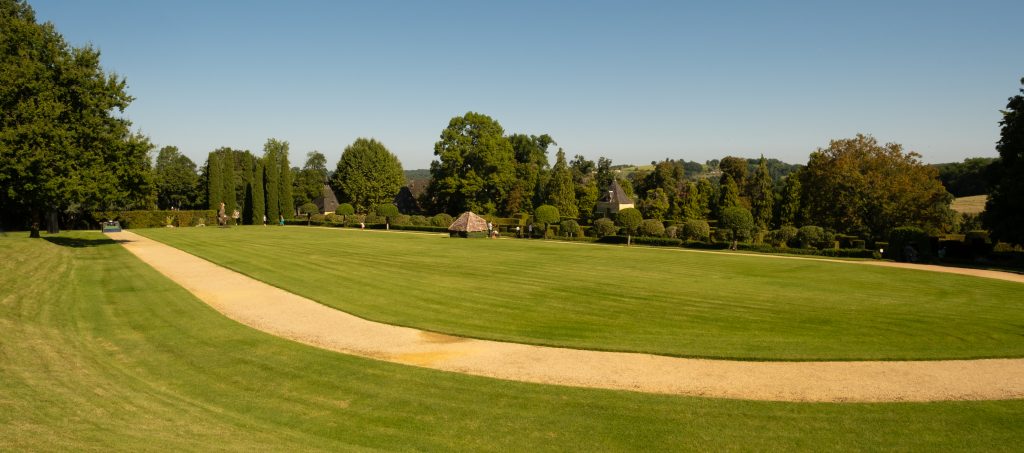
Multiply that level of attention to detail and craft work by the hundreds of shrubs and thousands of floral displays on these grounds. This is “nature”, but nature that has been completely tamed and structured, nature reimagined through the eyes of human artists. For me, the effect was powerfully calming; this is an extraordinary place to wander, with no other agenda than to think, to rest, or to enjoy a spring breeze and a brilliant blue sky.

The history of Eyrignac's gardens
There is, of course, an interesting backstory to these gardens. The current landlord of the estate is part of a family line that has owned the site for more than 22 generations over 500 years. At one time, there was a medieval castle here, but it was destroyed in the 1600s. The current manor house at the center of Eyrignac was built on the same site beginning in 1660, and a classic French garden followed a hundred years later. In the 19th century, the manor’s owners decided to follow the fashion of their era and restructured the gardens in the style of “an English park”.
But in the 1960s, Gilles Sermadiras (father of the current owner) decided to return the site to its classic French style, and he started a massive project of rebuilding. His son Patrick describes the process: “He was guided by his own vision and searched the grounds for traces of the former garden; low walls, stairs, former ponds, etc…. He personally drew up the plans for the garden he had so often imagined and which was a reflection of his own character.” As signs around the property make clear, this was not a simple restoration project; the “English park” had fallen into disrepair, and it was necessary to rebuild the original French gardens almost from scratch.

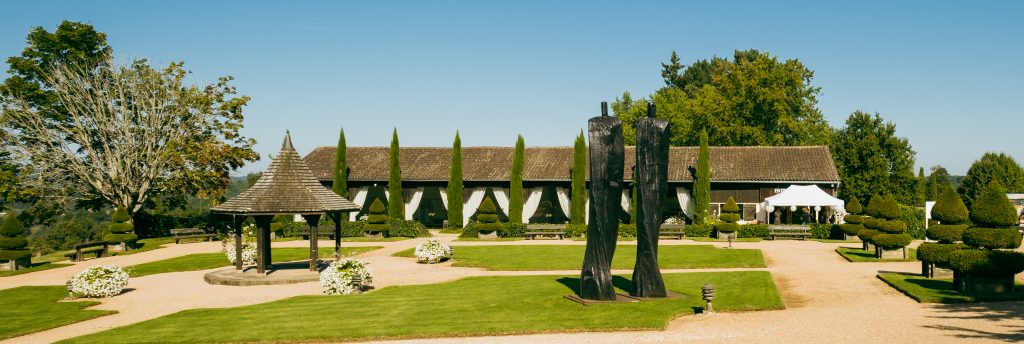
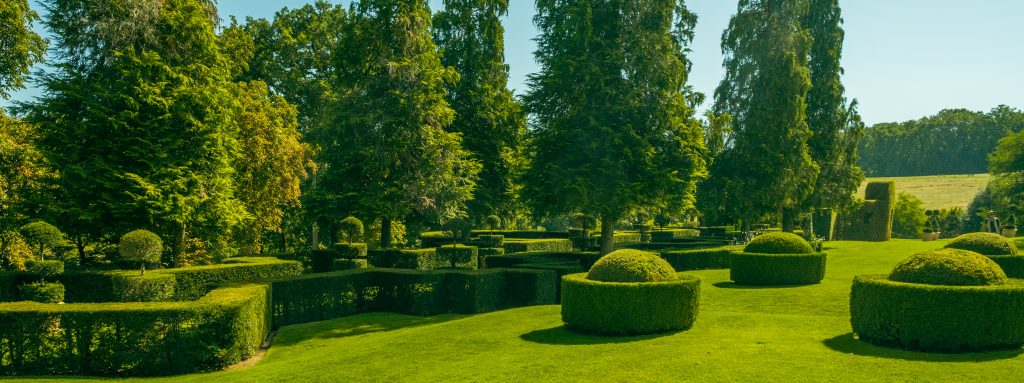
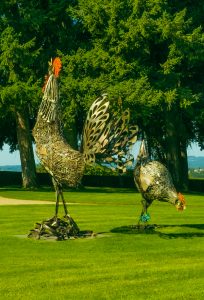
The current gardens reopened to the public in 1987, and today they draw 80,000 visitors a year. And as any gardener knows, the work is never finished! A staff of 12 people handles the constant maintenance (estimated at about 20,000 hours per year), using nothing but hand shears and artisanal leveling tools to keep the topiaries and flowers in shape. (The routine I observed – the hand clipping of the grass borders – happens 10 times a year over 7 km of lawn, and that’s just one relatively small part of the overall effort!)
Visitng Eyrignac today
The results of this massive investment of manual labor are evident in the unique individual gardens that make up the site:
- L’Allee des Charmes – a 100-meter-long alley of carefully tailored yews and hornbeam trees. This is often the “postcard” image you’ll see of the gardens of Eyrignac, and it’s a marvel of the labor-intensive methods of shaping the plants using only hand tools.
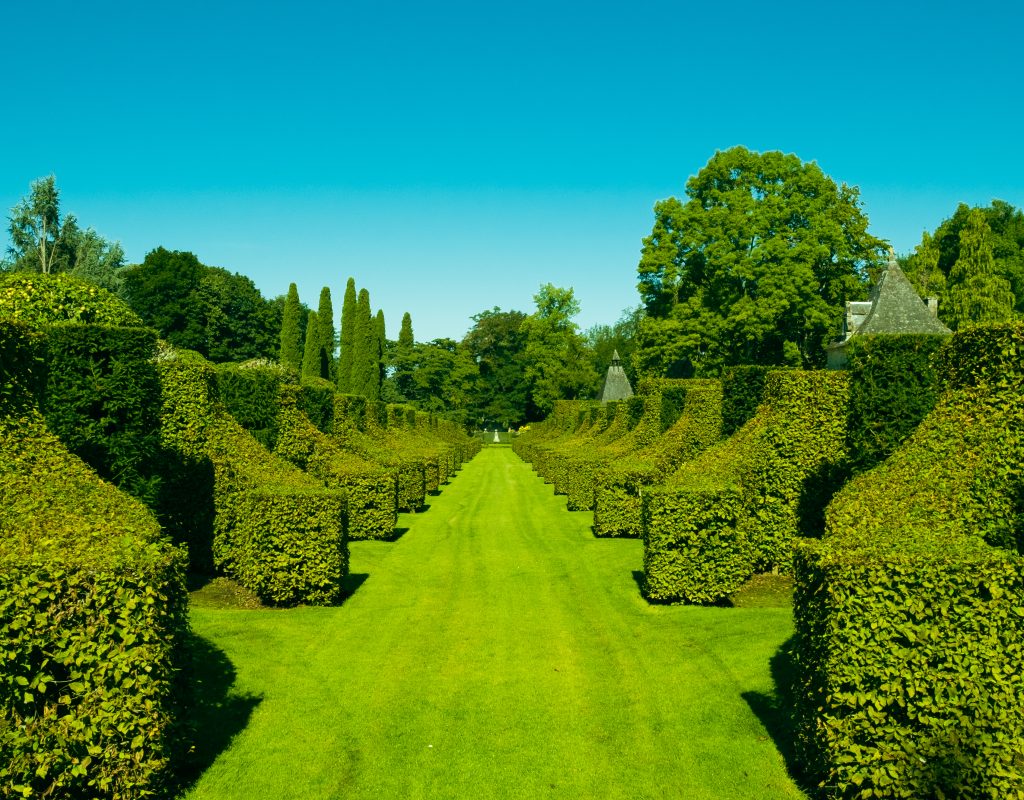
- A small remnant of the 19th-century “English park”, seen here through Neogothic arches that are covered with climbing roses and punctuated by hydrangeas and borders of periwinkles. This area of the park is much more “sauvage”, in the English style, and it’s really the only part of the garden that is not precisely clipped into shapes.
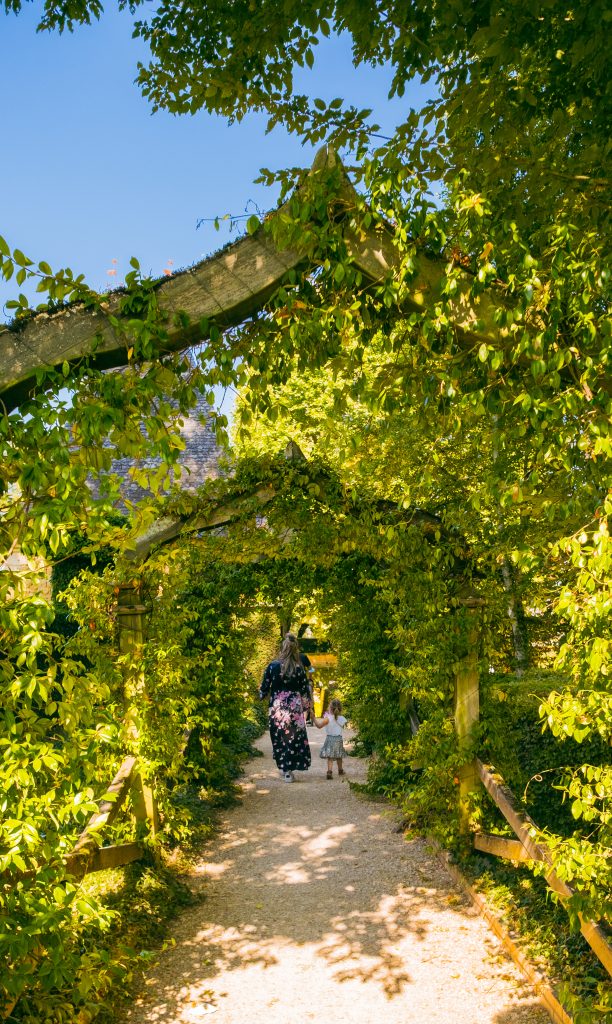
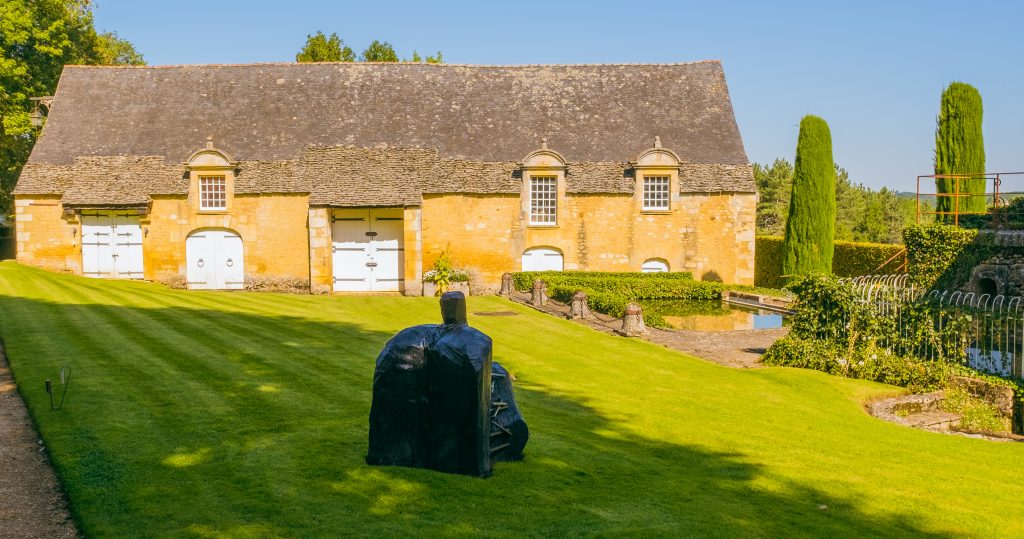
- Around the old manor house and its outbuildings, you can see a “mirror” pond (once a fish hatchery) and some beautiful floral borders.
- The “Pavillion of Rest” (what a great name!) is actually a vestige of the time of King Louis XV, and although the ground floor is a chapel-like area for meditation and calm, the upper floor was once used as a place where silkworms were bred and shipped off to the silk makers of Lyon.
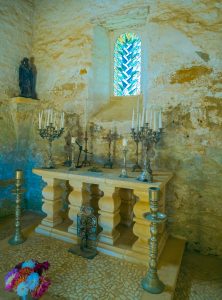
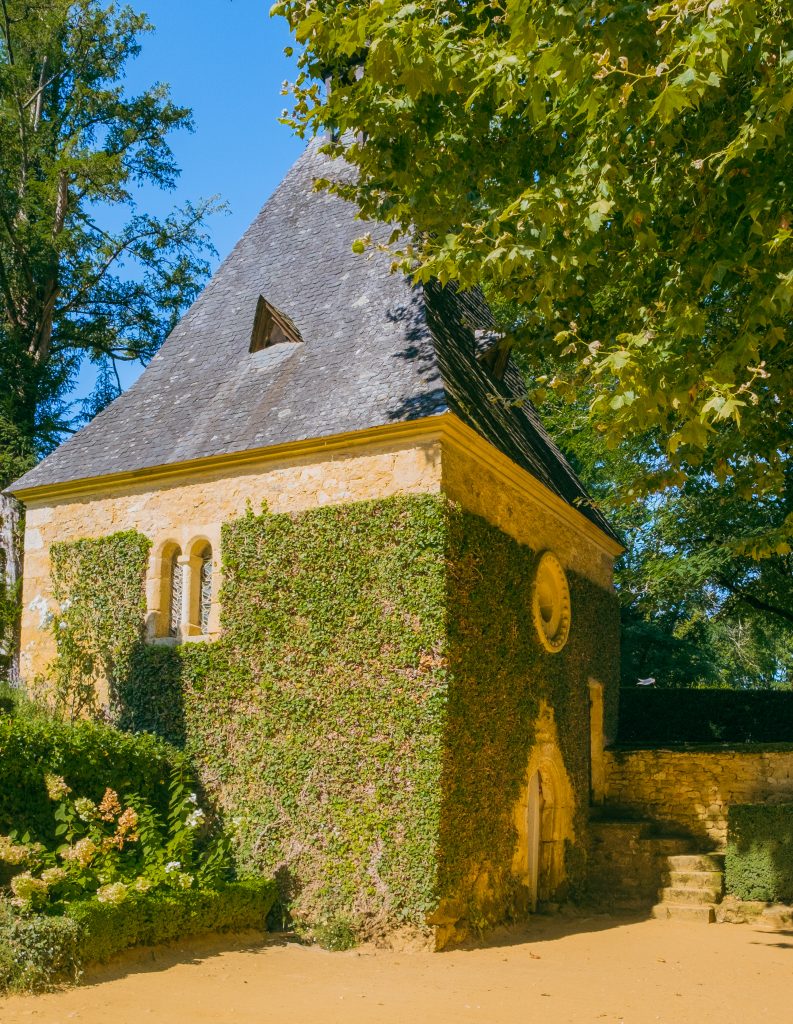

- The “Enchanted Terrace”, an alley of yews clipped into the shape of truncated pyramids leading up to the main manor house
- A “white garden” and an olive garden
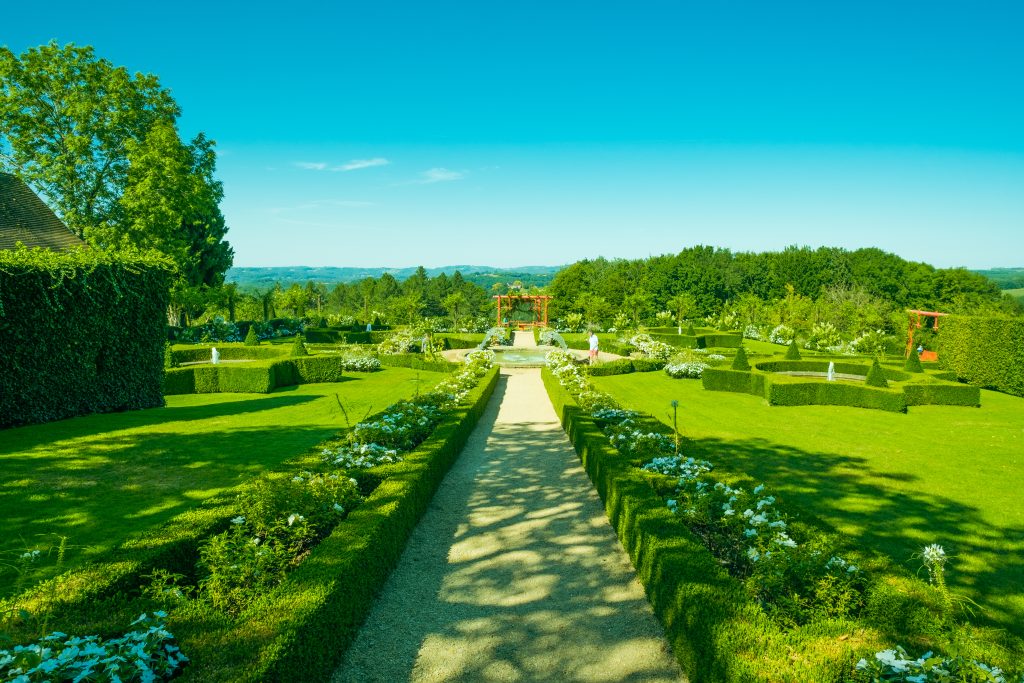

- An oriental garden fronted by a Japanese “Torii” gate
The Gardens of Eyrignac are open all year, even on holidays, although the onsite restaurant and tearoom are open only from April 1st to the end of October. Every Monday night in July and August, there’s a “white picnic” (“un pique-nique blanc”); you don’t have to have a reservation, but you do have to dress all in white if you want to enjoy the festivities.
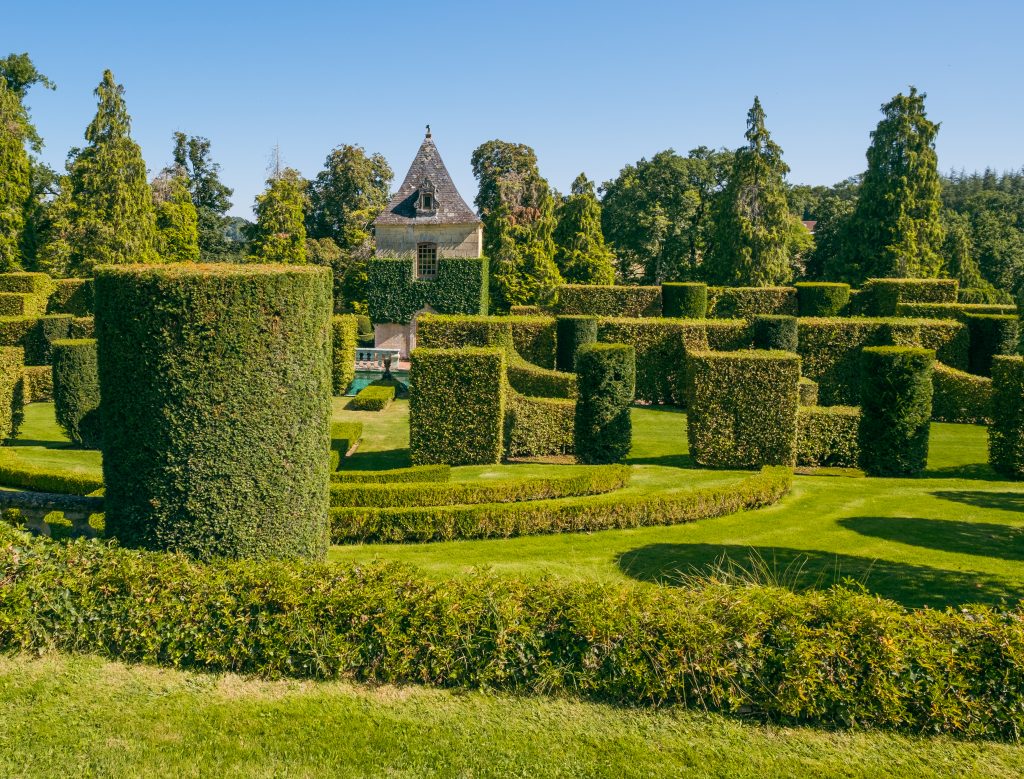
For me, the visit to Eyrignac was a long afternoon of contemplation in an extraordinarily beautiful setting. I admire the high level of craft (and the hours of hard work) required to reshape nature into such an artistic creation, but even that reflection on the underlying mechanics behind the beauty fades as the day heats up and the clouds disappear from the sky. The Gardens at Eyrignac are an exceptional site; if you find yourself in the Dordogne this summer, they are well worth a detour!
Have you seen other particularly beautiful gardens in your travels around France? What is it you find most attractive about a place like this? Do you prefer the “sauvage” English style or the classic French approach to gardening? Please share your experiences in the comments section below. And…thank you for reading!
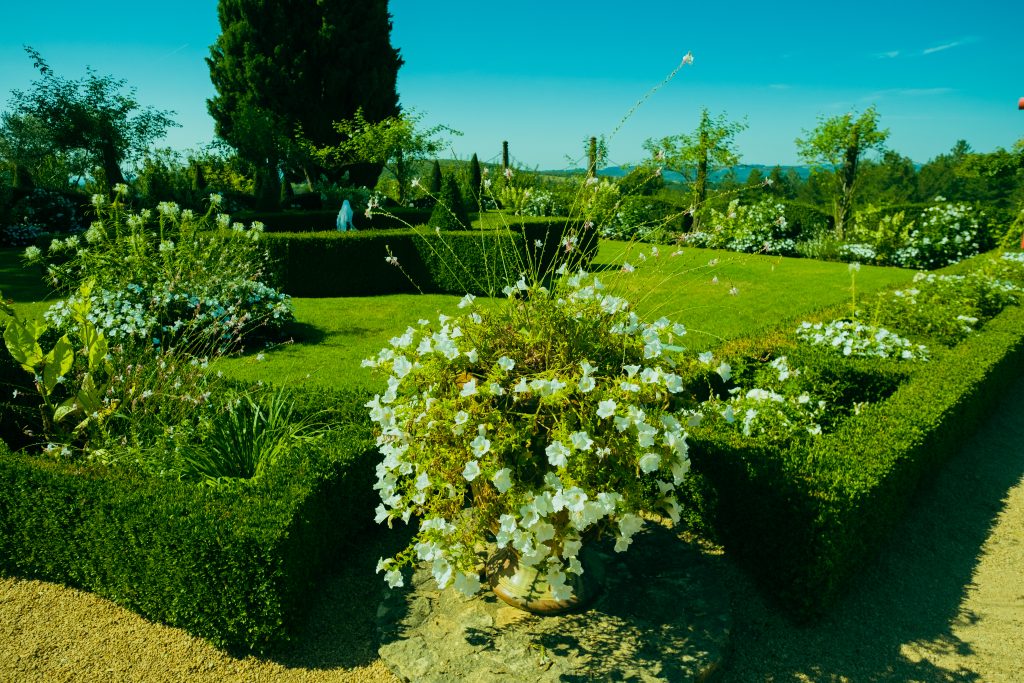
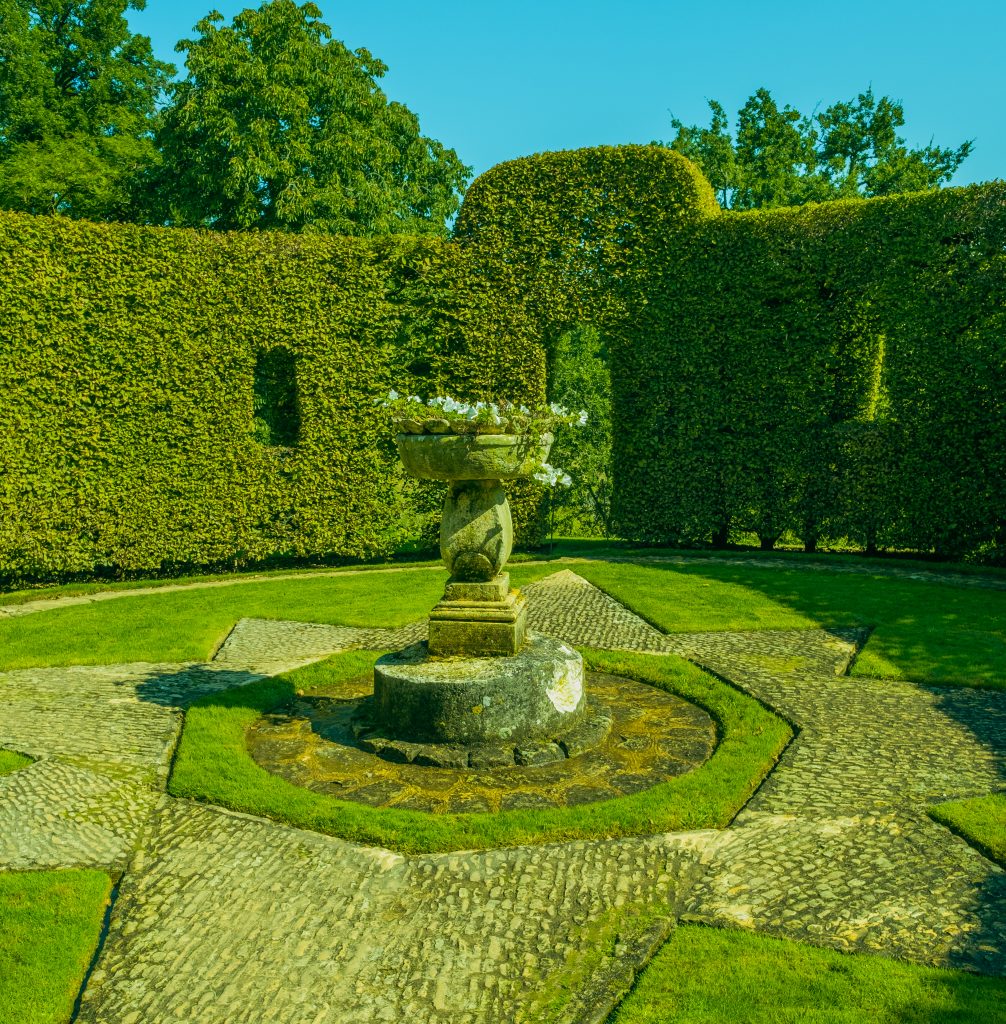
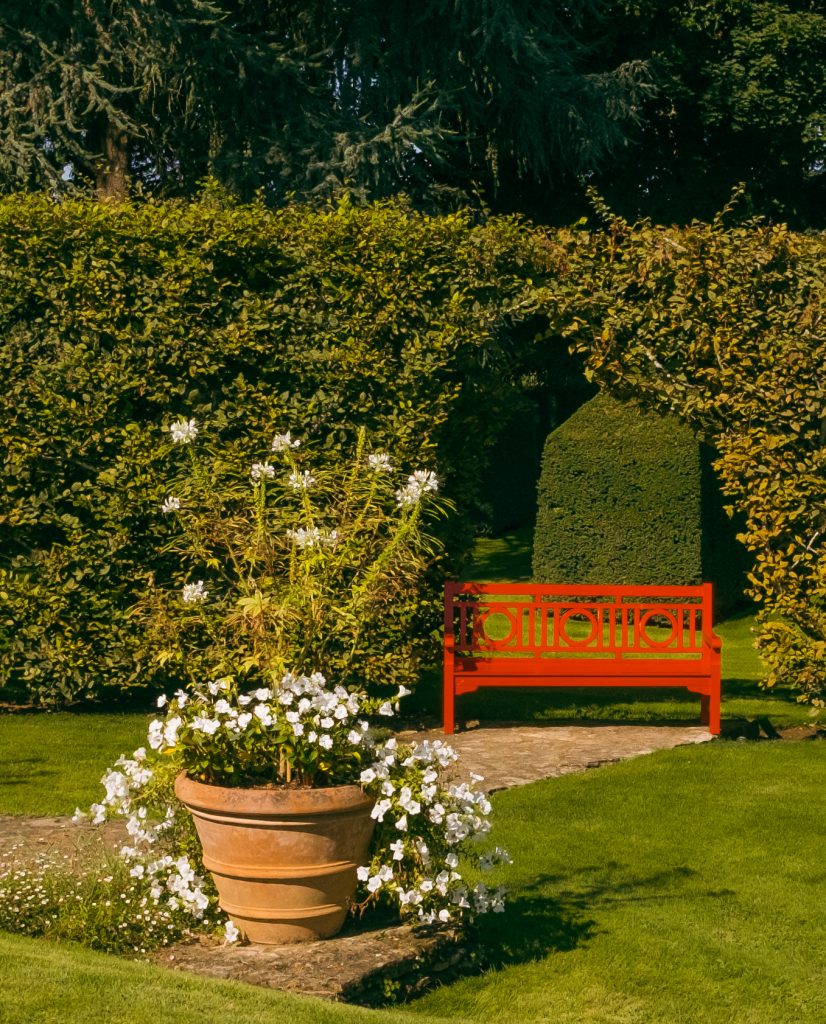
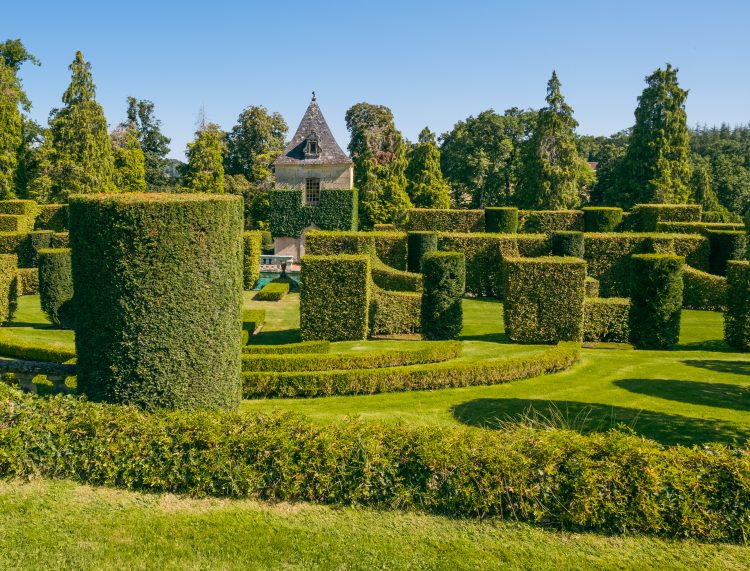

I have not seen, nor did I know of this place. I will without a doubt make this a place to visit and am excited to be part of the white picnic! As soon as you introduced the event my mind went to what I will be wearing!! As for the French vs English gardens, both for me have value. The contrast between them makes each more emotionally powerful. Different flavors so to speak. I was however amazed that only 12 people keep all this! I am embarrassed, that my own garden which is very small is overwhelming me. It seems I must sharpen my shears and up my game a bit. Thank you for showing me this. It was just what I needed with my morning coffee as I have a tree fallen in a recent storm to cut up. I too am a purist. I am using a hand saw. The slower pace allows me to plan a project with the pear wood.
Thanks very much for your wonderful comments! I’m glad this post came at a good time for you. (I’m an amateur gardener, too, and the amount of labor — and not just hard work, but finely-detailed work — is mind-boggling to me.) I appreciate your taking the time to write!
Great feature! This makes me want to plan a trip back to Dordogne this summer. I got married in Dordogne in 2016 (very near the gardens at Marqueyssac) although I never had the chance to visit these beautiful gardens as I had not known about them and to be honest, my husband and I were not yet as interested in gardens as we are now. 🙂
We spent this past Easter weekend in Philadelphia, solely to visit Longwood Gardens, although sadly, we were too early for the water fountains.